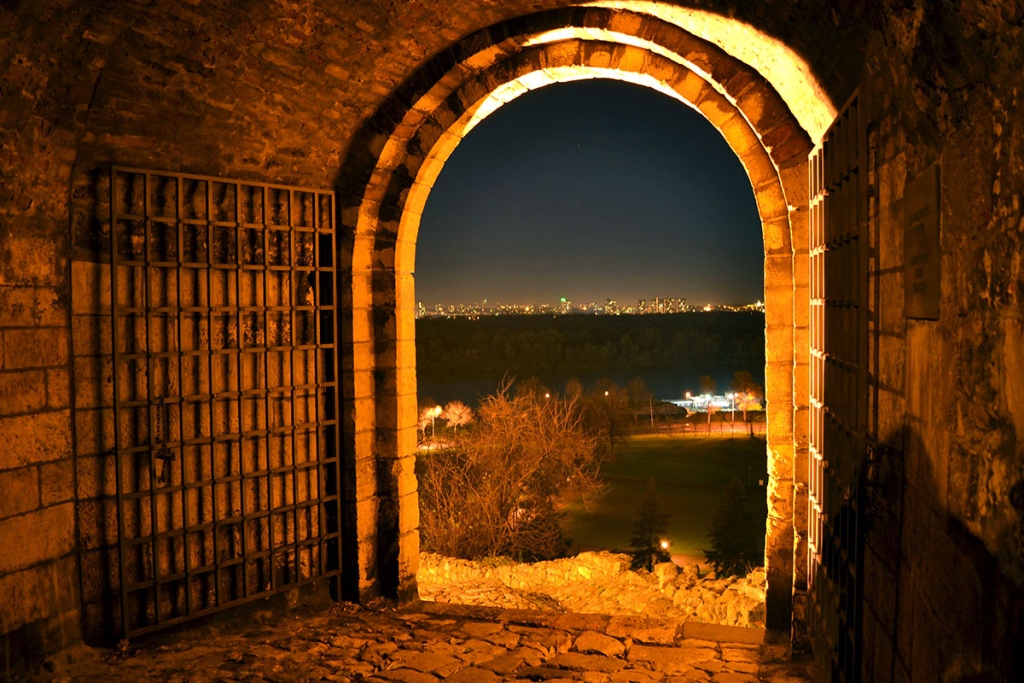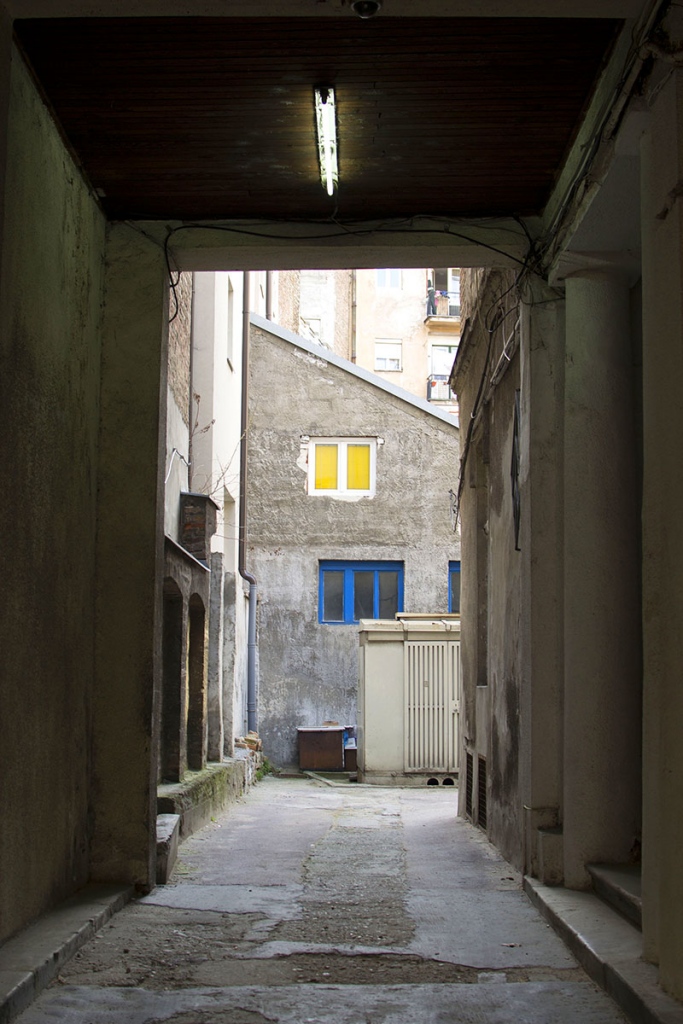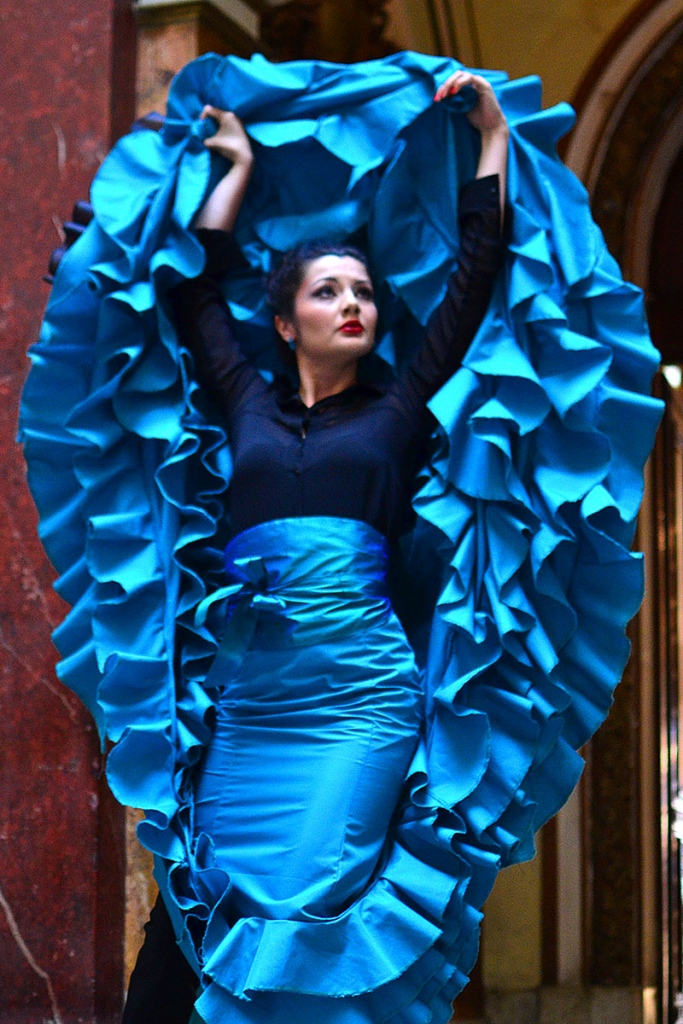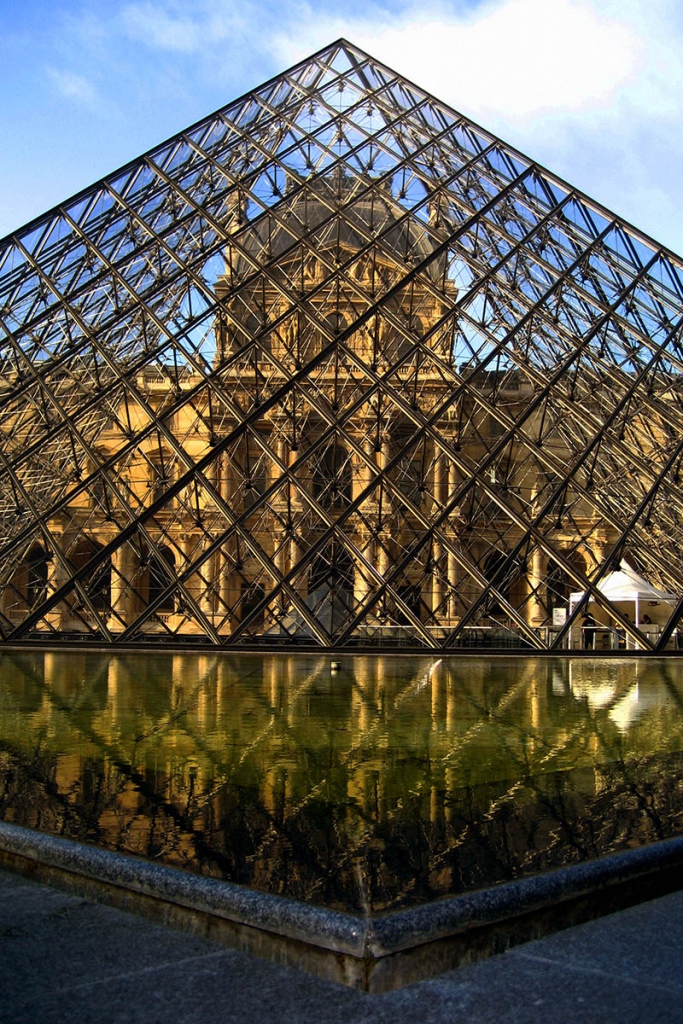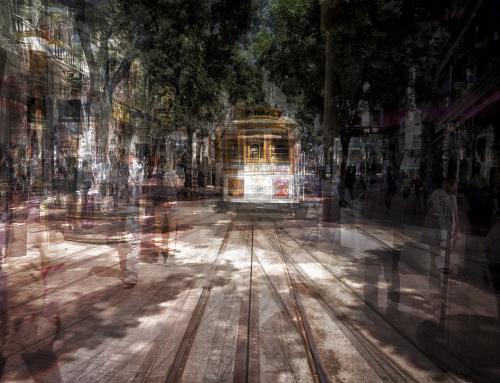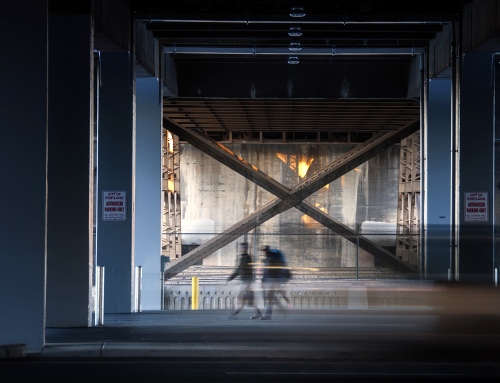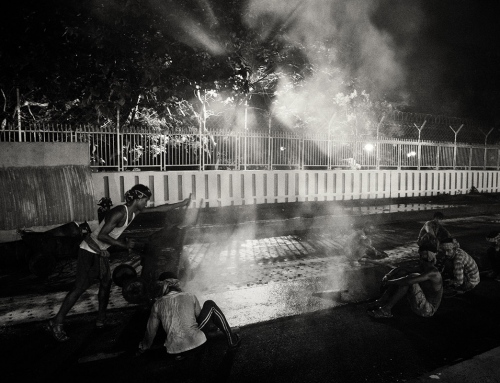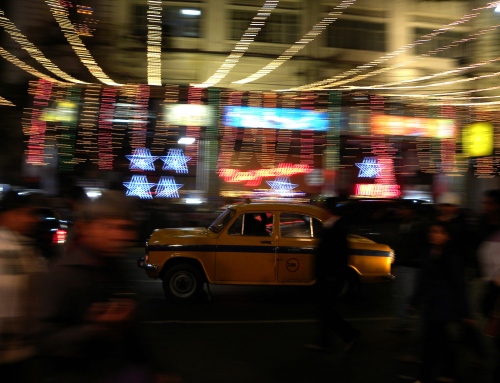Framing is a basic part of photographic composition that photographers use in every shot. What you include or exclude from the photo will define your frame. But there are ways of framing within the actual image that will emphasize your subject by drawing attention to a specific part of a photograph.
A frame within a frame
The most literal use of framing within a photo is including an actual frame. They can easily be found in architecture, like in the form of windows, doors and passages. Taking a picture ‘through’ something will add a sense of depth and lead the viewers gaze towards the focal point of the image.
The photograph above is a classic example of a frame within a frame. The doorway had a small amount of lighting and was quite dark in general. But there was this beautiful cityscape opening up with a bunch of tiny lights, which I could have just photographed as is. Instead I decided to include both the doorway and the cityscape, which makes for a much more interesting image.
This is another example of a frame within a frame. If you have been following our series on composition in photography, you will be able to recognize some other elements too. There is a transition from dark to light and some leading lines that all work together to lead the gaze towards the brightly colored windows.
Closing off the frame
Almost any kind of shape or opening can be used to frame your subject. Framing closes a part of a photograph off and the eyes are naturally drawn to the open part of the image. Look for openings in your surroundings and place your subject in them.
The image above was taken through a roll of colored paper. I noticed the cat kept pushing its head into it, so I quickly grabbed my camera and took the shot. You can see there is a lot of negative space left, which additionally puts all the attention on the cat.
Creative framing
Now that you’ve got the basics of framing down, you can start being a bit more creative in your framing. Don’t get stuck on just searching for different openings and passages. Look for other elements that could almost imitate a kind of frame.
In this case, the dress of the dancer is the frame. It almost took the shape of an ellipse and rounded her face and torso. Combined with this intense blue color, it pulled the attention to her facial expression really well.
Here is another example of creative framing. The Louvre palace and the glass pyramid are overlapping, but the geometric lines of the pyramid work as an unusual kind of frame. There isn’t a classical frame around the palace, but still the shapes and their positioning pull the gaze straight in.
Practice and learn how to use different types of framing so later on you can begin combining various techniques in a single photograph. You see there are no definitive rules in photography, but you can take some bits and pieces from every lesson and you photography will surely improve.
